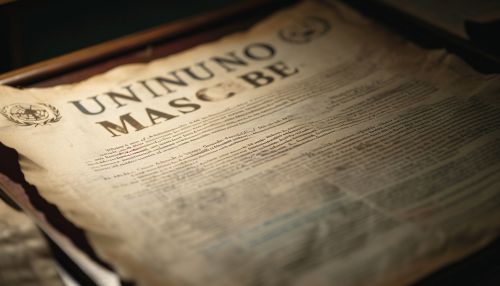United Nations Charter
Origins
The United Nations Charter is the foundational treaty of the United Nations, an international organization established at the end of World War II. The Charter was signed on 26 June 1945, in San Francisco, at the conclusion of the United Nations Conference on International Organization, and came into force on 24 October 1945. The Charter articulated a commitment to uphold human rights of citizens and outlined a broad set of principles relating to achieving ‘higher standards of living’, addressing ‘economic, social, health, and related problems,’ and ‘universal respect for, and observance of, human rights and fundamental freedoms for all without distinction as to race, sex, language, or religion.’


Structure and Content
The Charter is divided into a preamble and a series of articles grouped into chapters. The preamble sets out the objectives of the United Nations, including the maintenance of international peace and security. The chapters follow a progression, dealing with: the purposes and principles of the United Nations; membership; the principal organs; the arrangements for international cooperation; pacific settlement of disputes; collective measures for the prevention and removal of threats to the peace; action with respect to threats to the peace, breaches of the peace, and acts of aggression; regional arrangements; international economic and social cooperation; non-self-governing territories; amendments; ratification and signature.
Principles
The Charter's principles are expressed in its preamble, where the signatory states commit themselves to preserve human rights, promote social progress and better standards of life, maintain international peace and security, and employ international machinery for the promotion of the economic and social advancement of all peoples.
Organs and Bodies
The Charter establishes six main organs of the United Nations: the General Assembly, the Security Council, the Economic and Social Council, the Trusteeship Council, the International Court of Justice, and the Secretariat. It also allows for the establishment of specialized agencies and makes provision for other entities to be recognized as United Nations organs.
Amendments
The Charter has been amended five times. The amendments have involved changes to the number of members of the Security Council, the method of voting in the Security Council, the admission of new Member States, and the budgetary process of the United Nations.
Interpretation
The interpretation of the Charter is often contentious. The language of the Charter has been interpreted in various ways by different actors, including states, the organs of the United Nations, and scholars. The Charter is a treaty, and as such, it is subject to the rules of treaty interpretation contained in the Vienna Convention on the Law of Treaties.
Criticisms and Support
The United Nations Charter has been both praised and criticized since its inception. Supporters argue that the Charter has played a pivotal role in promoting peace and human rights. Critics argue that the Charter is outdated and does not reflect the political realities of the world.
